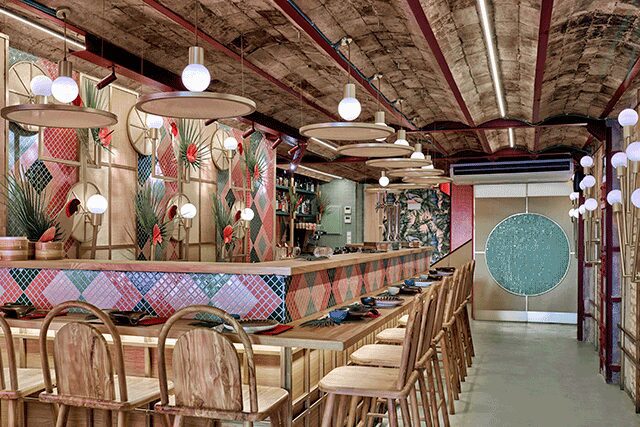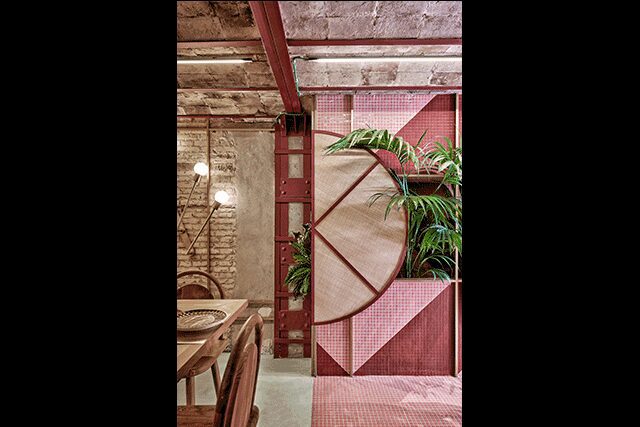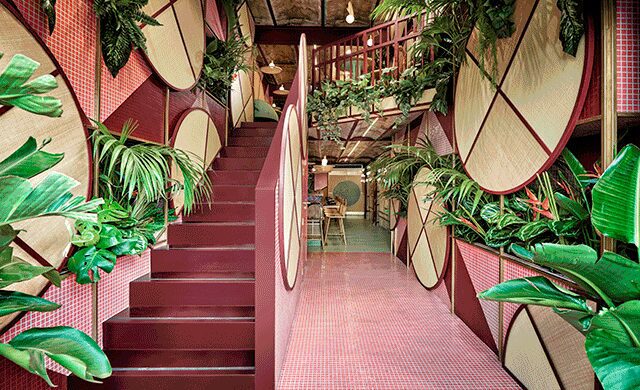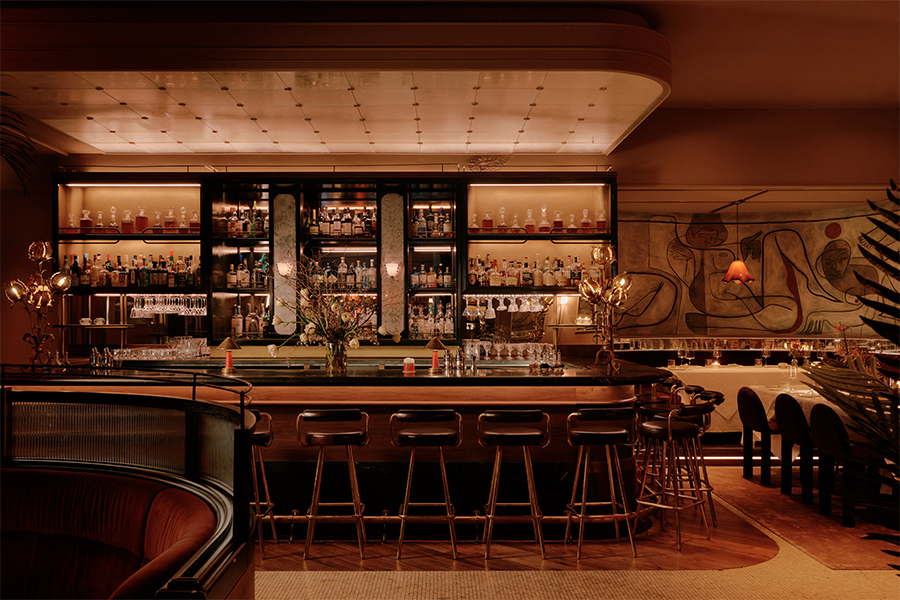In downtown Valencia, Spain, the city’s first tropical sushi restaurant is a bold fusion of Japan meets Brazilian tropicália. Designed by local studio, Masquespacio, Kaikaya, translated to daughter of the sea, mixes rich pink and green hues with wood, plants, and parrots. “Our aim with every project is to make customers disconnect from the outside world, “ says Christophe Penasse, cofounder of Masquepacio. “It was especially important to make them feel like they are in a country between Japan and Brazil.”
The design of the two-floor space was inspired by the owner, a surfer and lover of Brazil, and a historic fusion. In the early 20th century, a group of Japanese expatriates who came to work in Brazil’s coffee plantations, adapted local ingredients to their own palates, eventually arriving at the now popular Nipo-Brazilian cuisine. Masquespacio took its knowledge of Japan and expounded on it with a deep dive into tropicalism, a Brazilian artistic movement that was characterized by the fusion of cultures. Popular in the late 1960s, the firm “had to study tropicalism in detail to understand it and bring it to our design,” adds firm cofounder Ana Milena Hernández Palacios.
The entrance mixes mosaic tiling in pink and burgundy with an abundance of tropical plants that spill from the walls. Decorative rattan circles are reminiscent of the hats worn while working in rice fields. At the bar, colorful mosaic tiling in geometric patterns is mixed with a traditional Japanese wooden pattern and playful parrot lamps designed by the local firm (as are all of the lights, barstools, and tables). Upstairs, rounded seat niches blend both cultures. Throughout the space, the building’s existing vaulted ceiling, beams, and bricks (kept as is, with timeworn scratches and all) tie together three cultures into one vibrant space.






